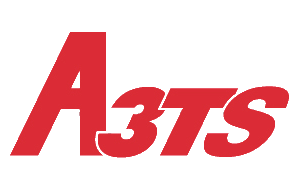Passivation-conversion without chromium VI
N.B.: The information contained in this sheet comes from reliable sources. Nevertheless, it is provided without any guarantee, express or implied, of its accuracy.
Principle:
Given the effectiveness of hexavalent chromium as a corrosion inhibitor, its replacement was not considered until the late 1980s. Its toxicity and the cost of treating the baths in a physico-chemical plant mean that the current trend is to replace chromium conversion.
Several formulations are already in industrial use or are currently being tested as alternatives to chromating: treatments based on titanium or zirconium salts, trivalent chromium, silanes, cerium, molybdate, lithium, phosphates, permanganate, etc. These processes are at various stages of development, depending on the applications targeted.
Inthe construction and automotive fields, chromium-free conversions are now commonly used. They are mainly composed of titanium and/or zirconium salts associated with polymer resins, or are based on silanes.
These treatments are sometimes applied without final rinsing. Often not very protective and not very electrically conductive, the layers formed are essentially an adhesion base for the paint.
ASPECT : coloré ou incolore
ÉPAISSEUR : quelques nanomètres à 0,2 μm
MICRODURETÉ : 200/250 HV0,05
ÉTAT DE SURFACE : couche rugueuse
CONDUCTIVITÉ ÉLECTRIQUE : faible
RÉSISTANCE A LA CORROSION : <24 h (ISO 9227)
Trivalent chromium-based processes have also developed rapidly because they are currently the closest to chromium conversions in terms of performance. They consist in immersing the metal in a solution containing chromium III salts and fluorides. The consumption of protons linked to the attack of the substrate in the presence of fluorides induces a local increase of the pH, leading to the precipitation of the trivalent chromium hydroxide on the surface.
ASPECT: colorless / light blue-green
THICKNESS: 0.05 to 0.5 μm
MICRODURITY: 200/250 HV0.05
SURFACE CONDITION: slightly micro-cracked and roughened layer
ELECTRICAL CONDUCTIVITY: conductive
CORROSION RESISTANCE: equivalent to chromium VI except for 2000 and 7000 series alloys
SUBSTRATE:
All aluminum alloys.
VARIANTS:
Many processes are under development and are often known by their trade name: SurTec 650, Lanthane 613.3, Alodine 5200 & 5700, Oxsilan AL 0500, X-IT Prekote, Alfocoat 748 ...
DIFFERENT PROCESSES:
Corrosion resistance in a mildly aggressive environment
Bonding base for organic coatings (paints, glues...)
Can be applied with a pad
Applications: beginning of industrialization in aeronautics and armament, more widespread in the building, automotive, railway, urban furniture...
SELECTION CRITERIA - LIMITATIONS :
The corrosion resistance of conversion layers without hexavalent chromium is often lower than those containing it, especially for alloys of the 2000 and 7000 series.
As with chromating, the application of a paint system is desirable when optimal corrosion protection is desired.
The decline in industrial use is still limited for certain sectors (aeronautics and arms).
ENVIRONMENTAL IMPACT:
Some of these processes have improved the situation compared to hexavalent chromium-based solutions. Others, currently under development, will have to demonstrate their compliance with environmental requirements.
REFERENCE:
ISO 8081: Chemical conversion coating for aerospace
MIL-DTL-5541 and 81706: Chemical conversion coating for military use
ISO 3892: Method for measuring the mass per unit area
ISO 2409: Paints and varnishes - Grid tests
ISO 9227: Neutral salt spray test
EN 12 373-18 : Pitting corrosion rating system
Implementation
Main equipment (furnace, reactor, line, machine...)
If you are a company interested in being listed on this page, please contact us: a3ts@a3ts.org
